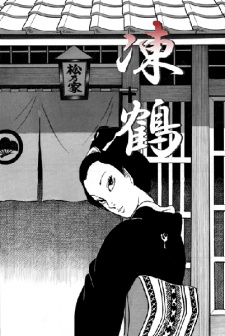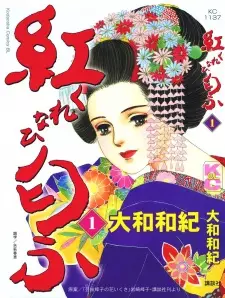Dec 11, 2019
The soft sound of shamisen, the tinkling of glass and the echo of a laugh. In the world of flowers and willows, ladies of the evening are busy distracting their guests and a young girl is standing outside on one leg to warm herself up, as if a sorrowful crane indulging them of
...
her presence ; this is the tale of O-tsuru : the geisha apprentice.
“Even if you have been sold, you should never sell your body nor you heart…When you realize it, it is already too late”
Sold as a child for 30 yen, Itezuru recounts the life of Otsuru as a shikomiko up until her adulthood when she becomes a professional geisha. Shikomiko are typically charged to do the laundry, cleaning, do the shopping, making food and, at night, assist her elder sisters by holding their shamisen and bringing them a change of clothes. To become a geisha also means to become an artist, dancing the mikuzushi, singing, playing the shamisen, writing poetry, making flower arrangement : elegance and refinement is the crux of a proper geisha.
Itezuru chapters acts as small vignettes where O-tsuru learns the different sides of her job around her and the different members of the Okiya. Having a childish and earnest personality, she is also unwillingly forced to gain a certain maturity, she offers a pleasant contrast to the cruel world she faced in. In this world of constant submission, she has to grow from her interactions and her different relations ; having to bear with the death of her fellow shikomiko that couldn’t stand abuse and being separated from their family, falling in love with the charming and passionate rakugo player, getting close to the Mizuten (also called “pillow geisha”, a class scorned for selling sex indiscriminately) in which she finds an aspiration and a mentor. Each of these serves to contribute to the maturation of this sweet little girl into a distinguished artist.
“If nature gave me a beautiful face, if I had worn beautiful kimonos, and if for that reason people turned back on the streets for me, I wouldn’t have minded. What was bothering was that only my poverty made me stood apart. What can you do to live a life without getting noticed ?”
Itezuru is also set right in the midst of the Mukden incident, even though war acts more as a backdrop to the story, some chapters works very nicely in portraying loss and grief of soldiers which counterbalances the anguish of O-tsuru from being separated from her brothers and sisters. It can also be observed through cultural elements like Hachiko or the beginning of westernization with the shift from the traditional shamisen to the guitar.
The later part focuses on O-tsuru as an adult. Gentle and seductress, as a full-fledged geisha, she has to go through losing her virginity with her protector and become the most famous geisha of her okiya. She also has an appointed shikomiko charged to help her to which she becomes a new but cold mother figure. Most of her excitment from her youth has disappeared and instead regrets her overall lack of liberty like not being able to start a family. With her particular status, this second part portrays her paradoxal longing for love and human contact. Still fragmented in vignettes, it is this time focused on different “conquests” and short love stories.
Although ending abruptly and lacking a proper conclusion, Itezuru offers a comprehensive depiction of this particular social period and acts as a nice gateway into Kamimura works.
Reviewer’s Rating: 7
What did you think of this review?
Nice
 2
2
Love it
 0
0
Funny
 0
0
Confusing
 0
0
Well-written
 0
0
Creative
 0
0Show all
 2
2

























